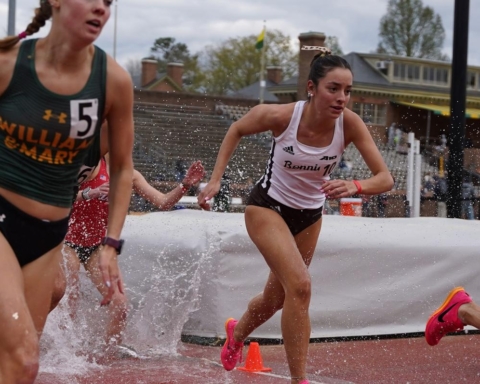Major League Soccer, MLS, introduced a fifth member to its referee staff during games halfway through the 2017 season: a video assistant referee (VAR).
The introduction of video review in MLS marks a change in soccer.
Referees are finally being recognized as mistake-making humans, and video review is there in case a play is missed.
One of the cool things about soccer is the running clock, and the adaptation to having a VAR made some fans wonder how that would affect the game.
While the VAR watches every single play during the game, not every violation is cause for a video review. Only four plays are eligible to be reviewed, and even then it is the head referee’s decision whether or not to use video review.
The four reviewable plays are goals and whether there was a violation in the buildup, penalties, red cards (but not second yellow cards) and mistaken identity of which player should be yellow or red-carded.
When the VAR signals to the head referee that a play could be reviewed, the head referee can take the VAR’s advice, review the play on a sideline screen or ignore the VAR and be confident in their decision. If he decides to head to the sidelines, he blow his whistle and makes a rectangle with his index fingers. After watching replays, it is the head referee’s decision whether to keep the call on the field or change it.
I had my doubts about VAR when it was originally announced and tested in MLS last year. I enjoy soccer because there are no breaks, besides when a goal is scored or a player is injured. I refuse to watch football because the games are so long and there is hardly any action, besides constant commercials.
I remember being equally skeptical when MLB introduced replay in 2008 (friendly reminder: that was nine years ago). Now, replay is a part of the game, and umpires and players are used to the short pause when deciding whether a ball was a home run or not.
In soccer though, short pauses are not a part of the game. The only time players get any kind of break is if a player is hurt or if the temperature on the field is hot enough to warrant a water break. VAR was eagerly awaited during the first half of the MLS season. After the All-Star game on Aug. 2, 2017, it made its official debut in a match featuring the Philadelphia Union and FC Dallas, taking back a goal scored by Dallas’ Maxi Urruti due to contact with the Union’s keeper Andre Blake.
Being that I’m a diehard Portland Timbers fan and not a Union or Dallas fan, I did not catch VAR’s first use. However, the Timbers were in action the day after in a match against the Los Angeles Galaxy.
Early in the match, the Galaxy won a free kick on the right side. The cross went into the box and found the head of Galaxy player Gyasi Zardes going into the back of the net and giving LA a 1-0 lead.
But wait. The referee made the rectangle motion with his hands and headed to the sideline screen to review the play at the suggestion of the VAR. The play was overturned and the goal taken away, as Zardes had actually hit the ball in with his hands and not his head. Zardes was given a yellow card for the play.
In all, the review took maybe a minute or two off the clock, which could easily be made up in stoppage time. I was impressed with the quickness and ease of replay, and my inhibitions were erased.
Big leagues around the world, like the Bundegliga in Germany and Serie A in Italy, are introducing VAR as well, showing that it is a good addition, despite some people’s initial worries.
Change can be difficult to accept, especially in something as organized and rule-oriented as professional sports. VAR is definitely a step in the right direction, and I’m interested to see if any other technological innovations are in the pipeline for sports in the future.
signoraa15@bonaventure.edu





